In 2021, Tara DeMarco explained the visual effects work on the Marvel Studios series, WandaVision. Now she’s back to talk about The Marvels.
How did you get involved on this movie?
The path to The Marvels began on WandaVision. Mary Livanos was the Creative Executive for both projects. I remember her working on the script for this film with Megan McDonnell while we were filming on the WandaVision set. As we were finishing post for the show, Mary asked if I would like to interview with Nia DaCosta for the role of VFX Supervisor for The Marvels.
How was the collaboration with Director Nia DaCosta?
Working with Nia was incredibly collaborative. She was clear from the start that she wanted the visual effects for the film to be as grounded as possible. The nature of the powers are quite fantastical, so it was important to have real looking environments and real looking cats. Any visual effects puzzle that needed to be solved was often brainstormed together, with Nia guiding us towards her visual and story preferences.
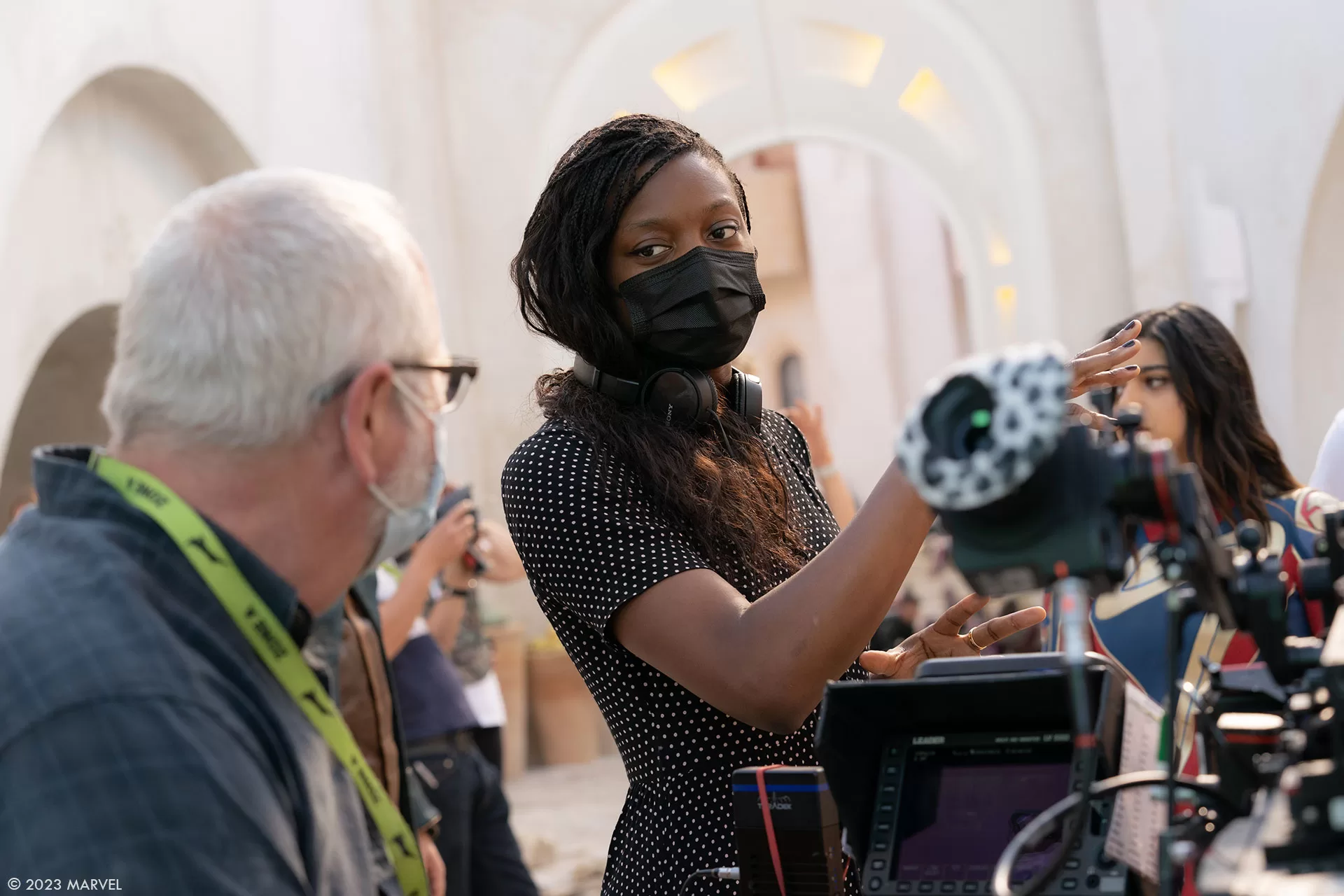
You were in charge of WandaVision before this movie. What are the main differences between a MCU series and a MCU movie?
There were a few big differences between finishing for an MCU series versus an MCU movie. The first one is the delivery deadline. Streaming series have short intervals between deliveries for each episode, where the film had the benefit of one deadline for all the work. The other notable difference was overall volume of work and shot count. In The Marvels, we were focused on a few very specific characters and environments and could create robust assets in CG. In WandaVision, we were able to do something similar with the hero characters, but our show had too many locations to rely on fully CG environments. We based most of the work for the MCU series on set builds or locations.
How did you organize the work your VFX Producer?
James Alexander was my VFX producer for both WandaVision and The Marvels. We were in constant communication about schedules for key shots, dev items, overall vendor schedules and the associated budgets. Every change in a MCU storyline has a knock-on effect with our vendors and their artists. We tried very hard to communicate guidance to our vendor teams for the best use of their time. James is an absolutely crucial partner in communicating with both the studio and the vendors.
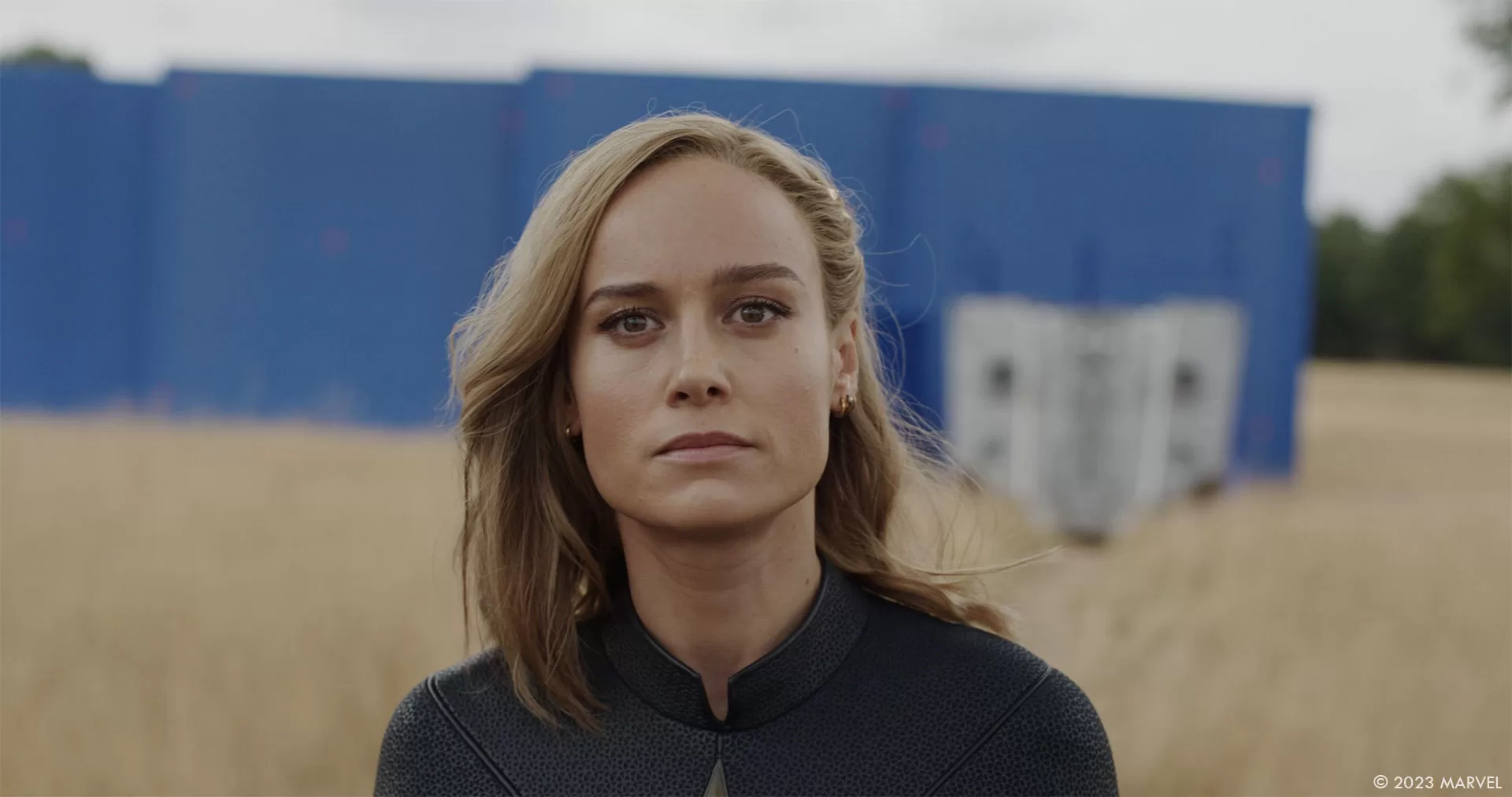
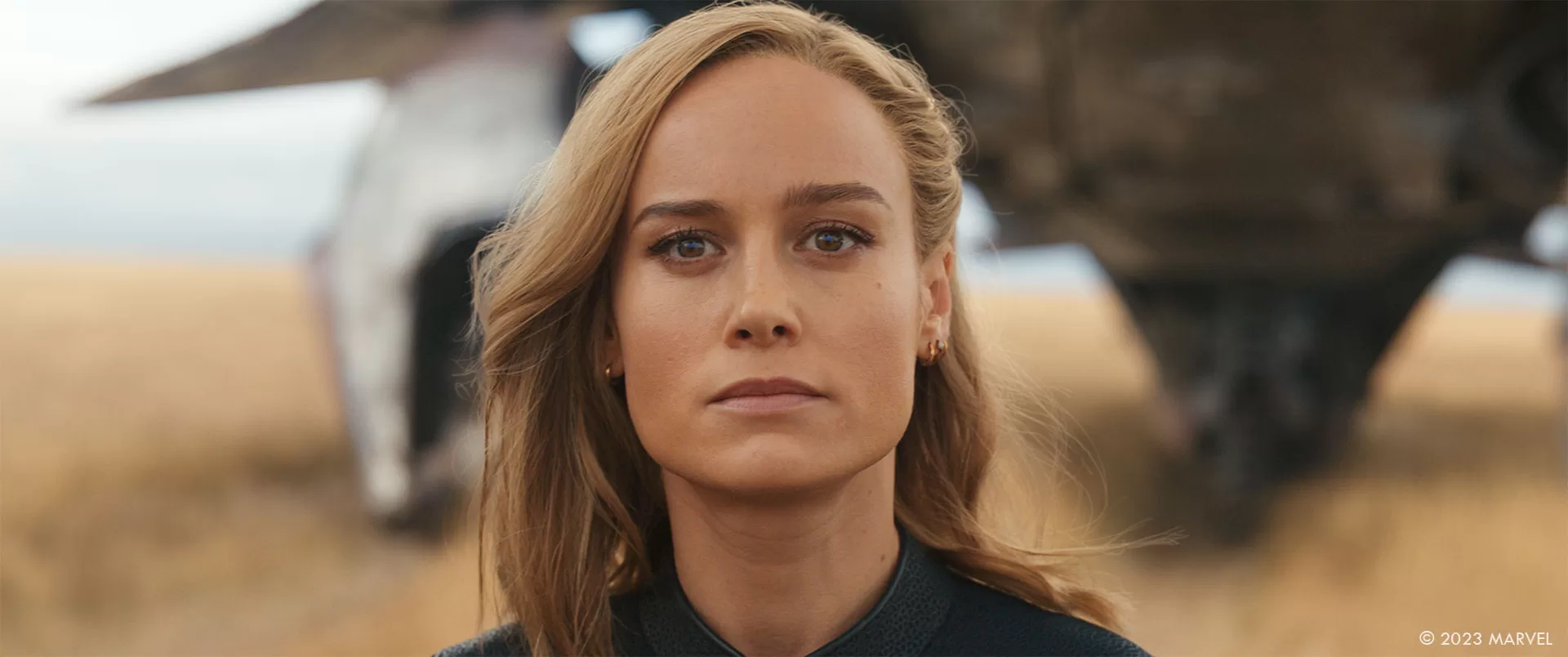
How did you choose and split the work amongst the vendors?
I start every project with a script breakdown and a kick-off call with several vendors per sequence. We often cast the VFX work based on existing style or proficiency at a vendor. However, we are very open to seeing test shots and meeting with new teams. Ultimately, it comes down to vendors who are excited to work on this kind of film. It’s a long process and we are definitely in it together.
Can you elaborates about the creation and animations of their various powers?
The entanglement effect in the film is based on the three heroes having « light-based powers ». Knowing this, we wanted the design of powers across all three heroes to be complimentary. Carol’s powers had a look established in Captain Marvel and in Avengers Endgame. Director Nia DaCosta loved the look of Carol’s binary flares, so we worked on incorporating the same style of FX into all of Monica’s developing powers. Monica’s intangible effect has a delicate amount of transparency to preserve actor performance and subtle multi-color mini binary flares that nod towards her ability to see all wavelengths of the light spectrum. Kamala’s hard light already had subtle flaring along the edges of the surfaces, so that was another way to tie the three together.
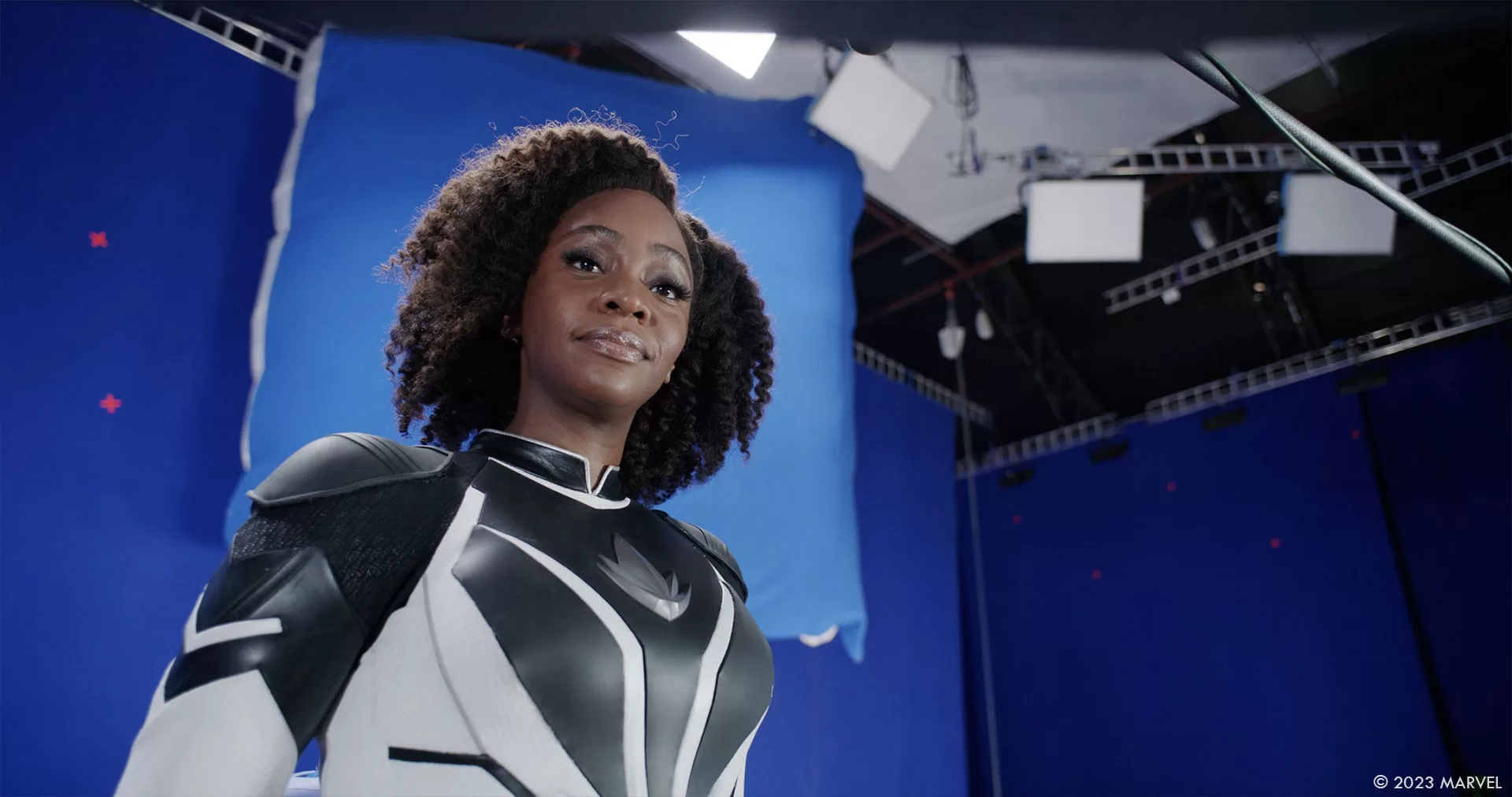
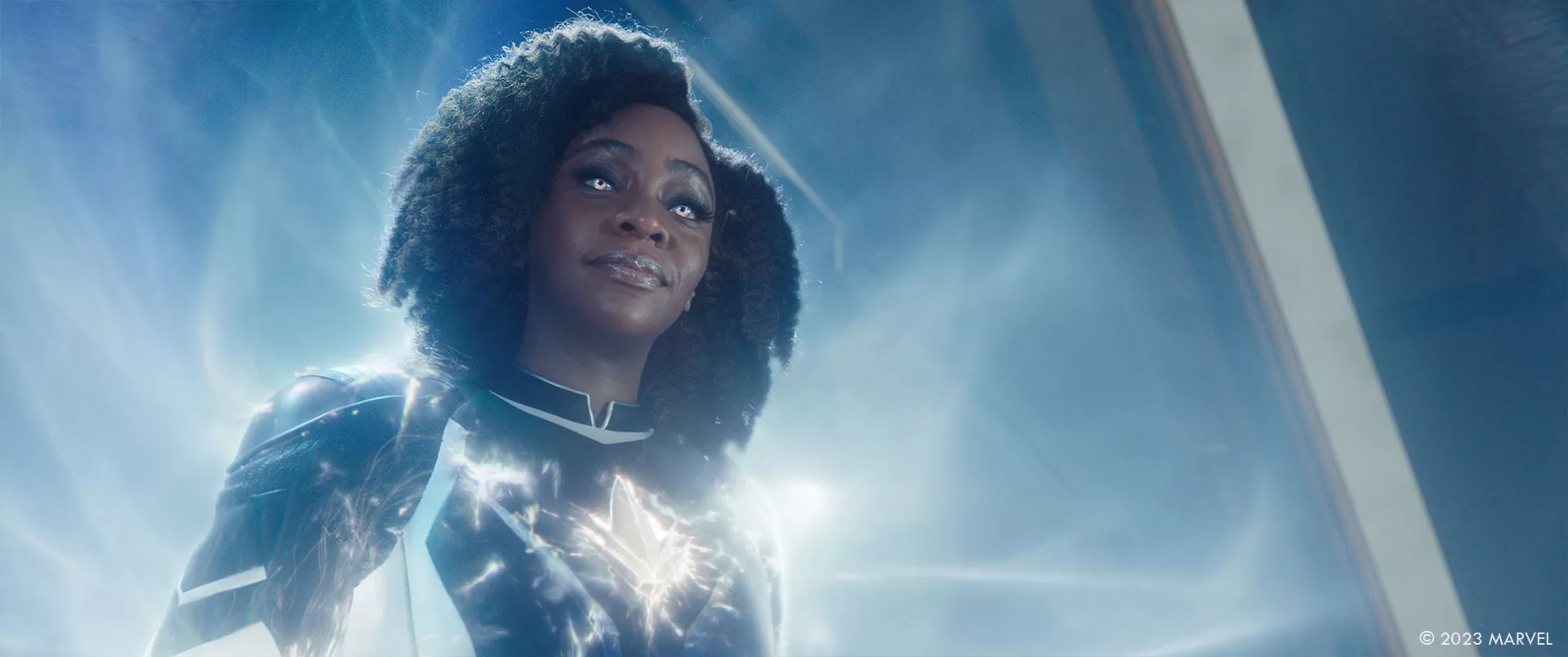
Each character had a distinct hue for their main power. Carol’s is golden yellow, Monica’s is a cool blue, and Kamala’s is a magenta-pink. This color distinction really helped readability in the entanglement swapping effect. We wanted the audience to clearly read the incoming and outgoing power colors, even if the switch happened across a cut. The entanglement effect was hand animated in compositing for every switch to aid the best possible story clarity.
The animation of powers and flying were another component of visual storytelling. We wanted Carol’s animation on Tarnax and in the finale to convey urgency, while on Aladna we tried to show she was really leaning into having a bit of fun while unencumbered by Entanglement.
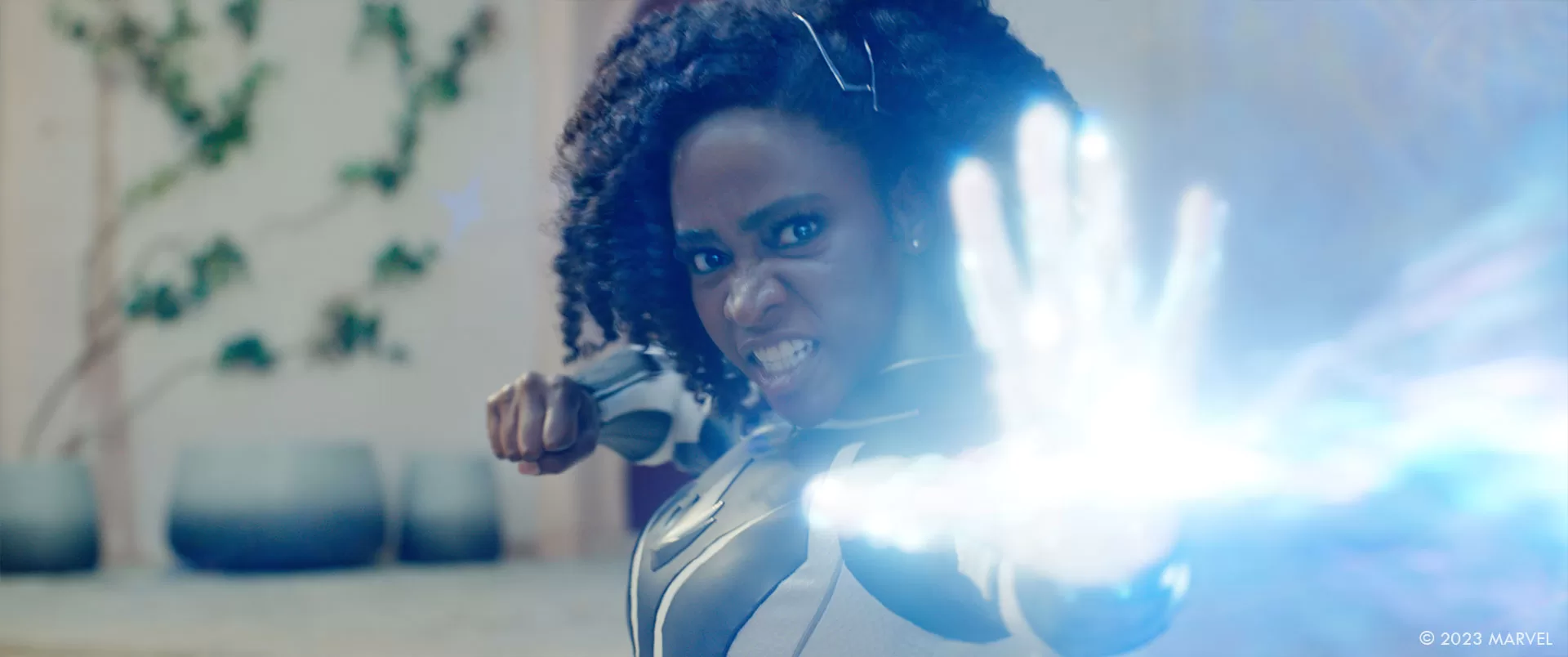
Which one was the most complicated to create?
Kamala’s hard light was a challenging effect to execute in many scenes. ILM developed a cool « photon-gathering » effect for the creation of Kamala’s hard light slides or discs. There was a delicate balance to the scale of the facets that made up each hard light object and the scale of the animated object itself. Also, depending on the lighting in the scene, hard light could be a little self-illuminated or very reflective.
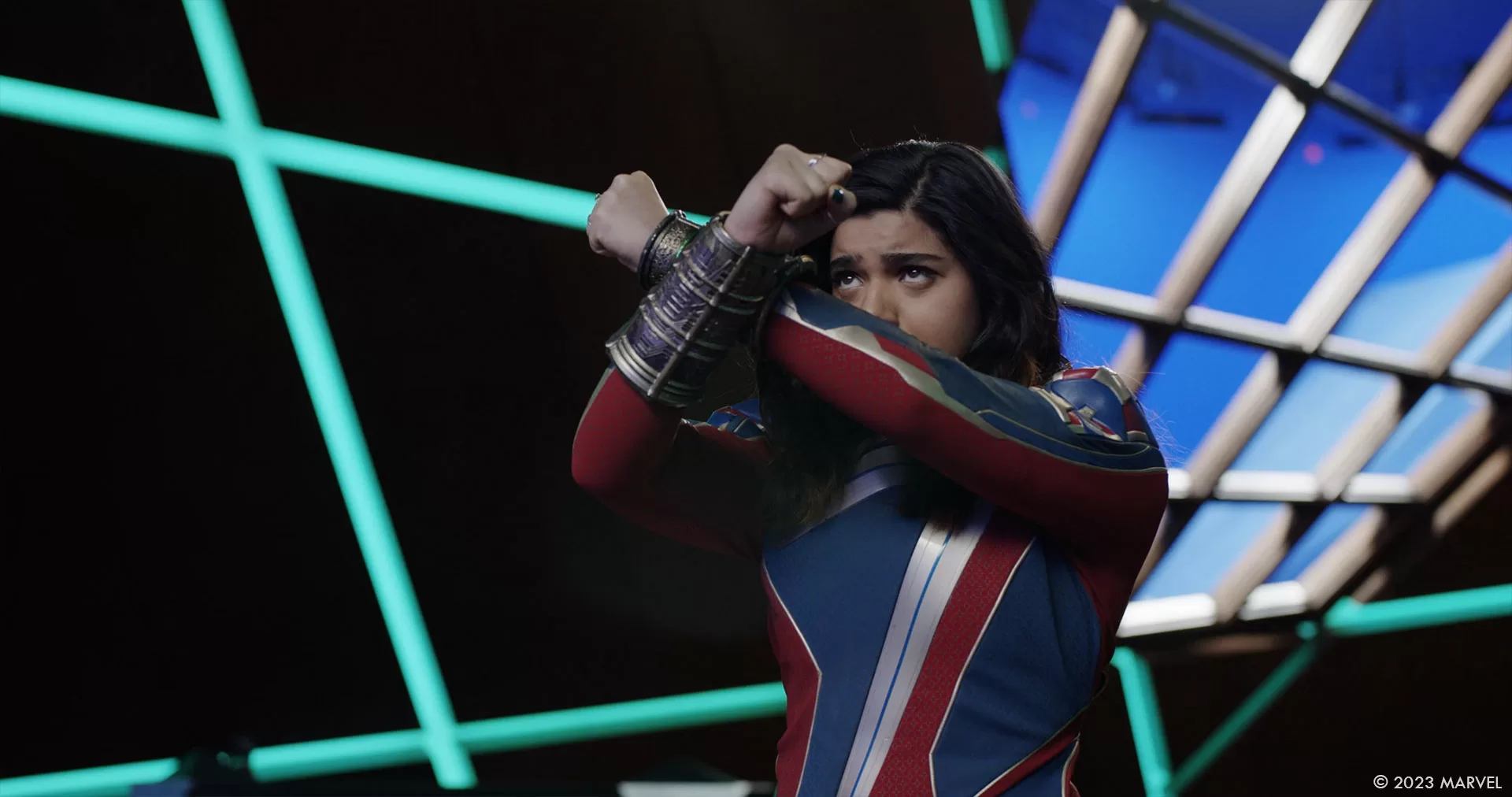
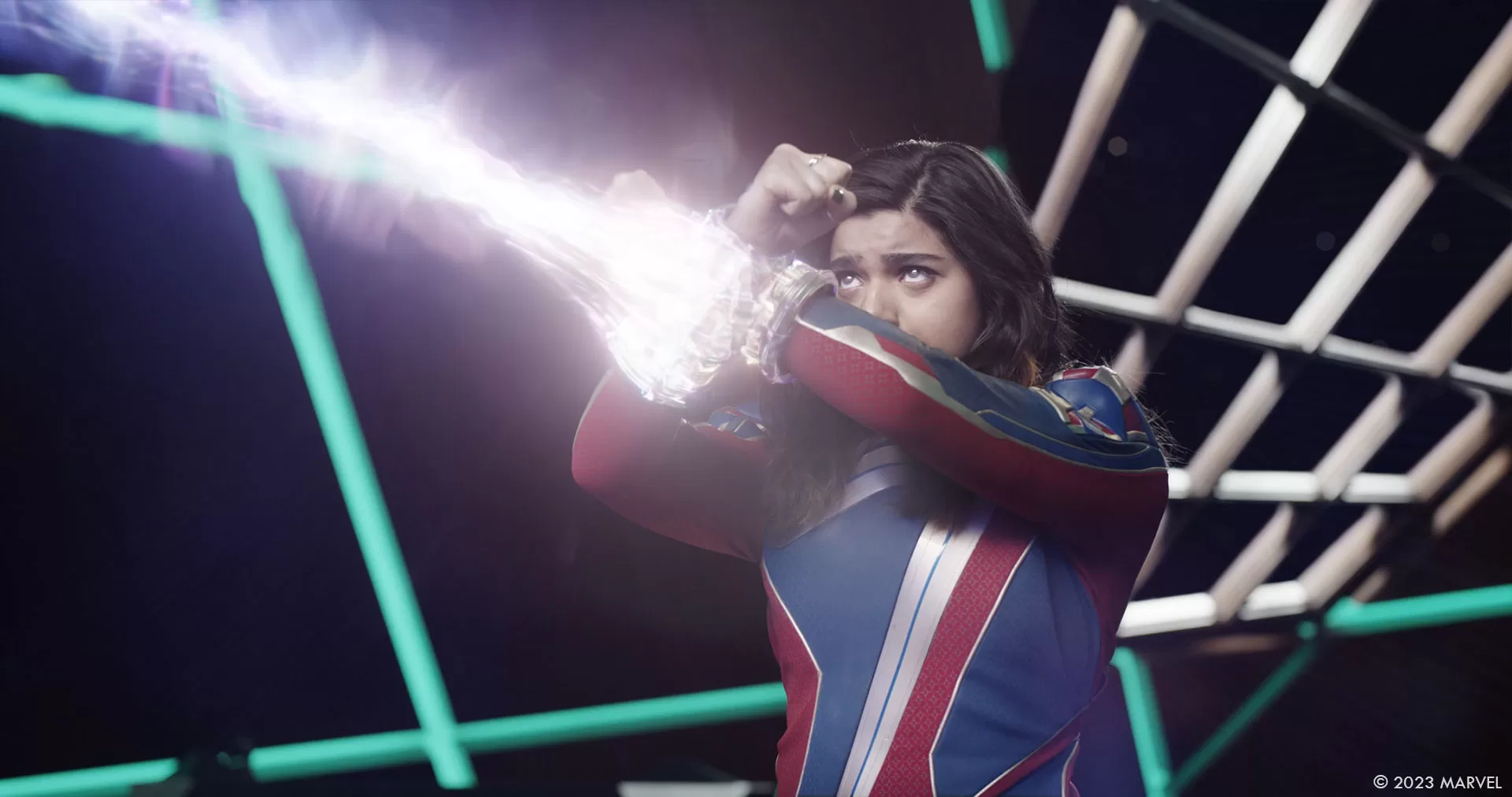
Can you elaborates about the design and creation of the ships?
Every ship in The Marvels was designed by our production designer Cara Brower. Throughout the post process, we enhanced some the original designs with features that might be necessary to amplify the action of the sequence. The creation of the ship assets was spread across three vendors. Sony Pictures Imageworks created the model for Carol’s Ship, ILM created the models for S.A.B.E.R. Space Station, Fury’s Escape Pod, Dar Benn’s Cruiser and Guard Ships. Weta FX created the model for Dar Benn’s destroyer.
The biggest challenge for each of the vendors with these models was scale. S.A.B.E.R. Space Station was a massive asset which was ultimately divided into thirteen different modules. This helped the team at ILM maintain the appropriate amount of scale detail when S.A.B.E.R. was seen from both very close and very far. Additionally, we wanted S.A.B.E.R. to maintain texture properties of spacecraft that already exist, going so far as to take a field trip to the California Science Center to look at the Endeavor shuttle with director Nia DaCosta. Cara had planned for futuristic design elements in the command center where Nick Fury spends his time, so our job with the CG station was to make sure the modern patterns and shapes were supported by smaller detail work found in real space stations.
Carol doesn’t really need a ship for fighting, so the Hoopty was designed to be her home. In visual effects execution, care went into the rigging and animation to keep it moving like more like an Airstream than a fighter jet.
How did you create the various environments?
Director Nia DaCosta wanted each of the planet environments to have a distinct look and feel. Our production designer, Cara Brower, created concept work based on these ideas for the architecture and landscape of each planet. Once we had a feeling for the spaces, Cara and I would collaborate and find the places on Earth that best represented the landscapes. For Aladna, we found limestone cliffs and a perfect shoreline in the town of Tropea, Italy. For Tarnax, 2nd VFX Supervisor Sarah Eim and I traveled to Iceland and scouted several canyons in person. We sent scout photos back to Cara who mocked up how the Stronghold settlement could sit in a valley. In each of those locations, we brought scanning vendor Visual Skies to capture large scale lidar scans and textures. We also captured helicopter plates and ground tiles on multiple lenses in each location.
Once the data was captured, we passed it along to the respective visual effects vendors to begin creating their environment assets. Each vendor had a unique task since the environments needed to plan for eventual destruction. For Sony Pictures Imageworks, this meant building an environment asset that could be destroyed with several kinds of destruction FX. For ILM, we wanted a perfect mediterranean-style ocean, since we would have to run massive water simulations for the geyser-style water column. We wanted the environments to be as realistic and grounded as possible to highlight the madness and fantastical nature of the FX. The reference footage captured in each location really helped push us all to maintain believable textures and lighting in each CG environment.
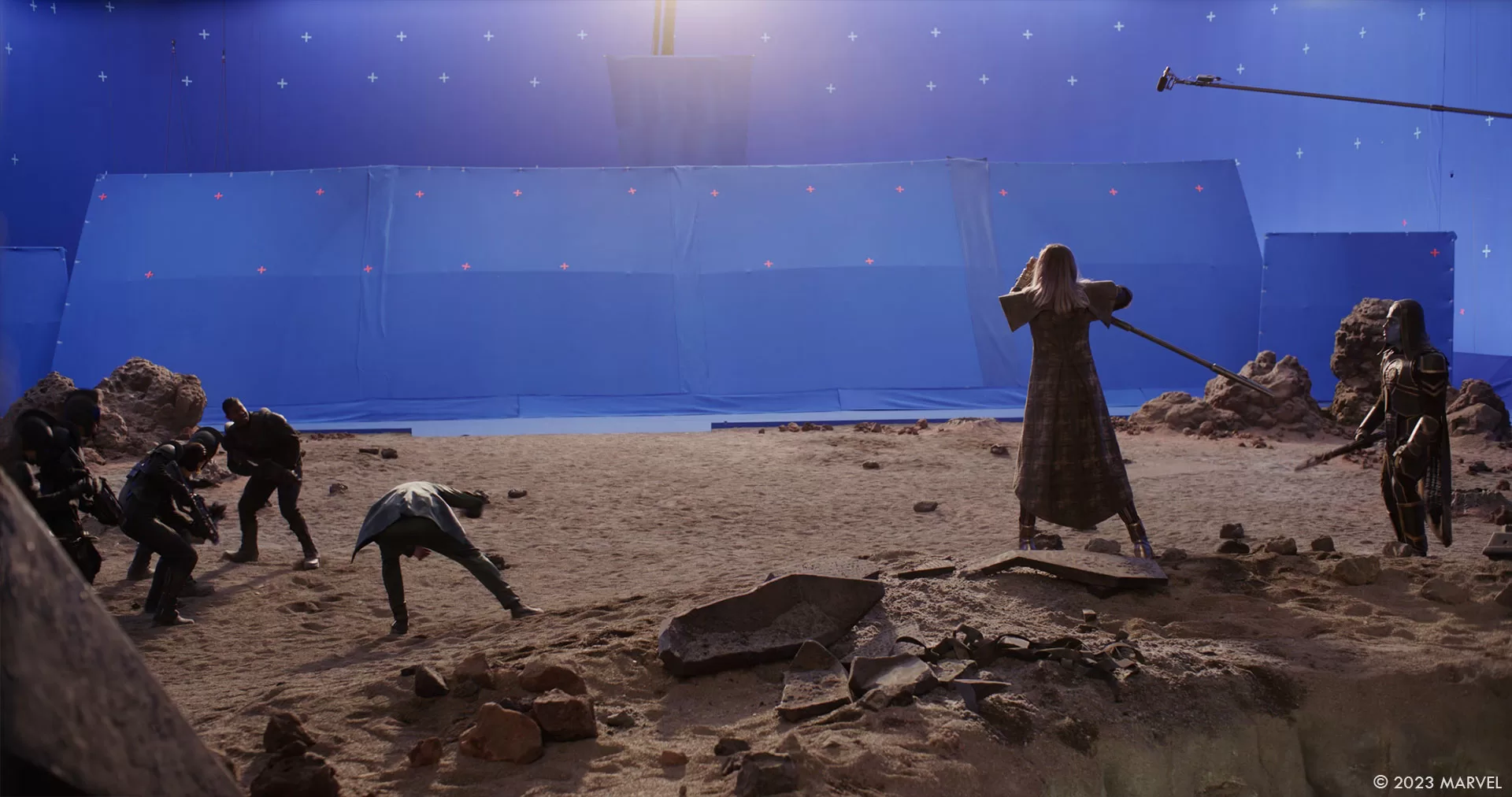
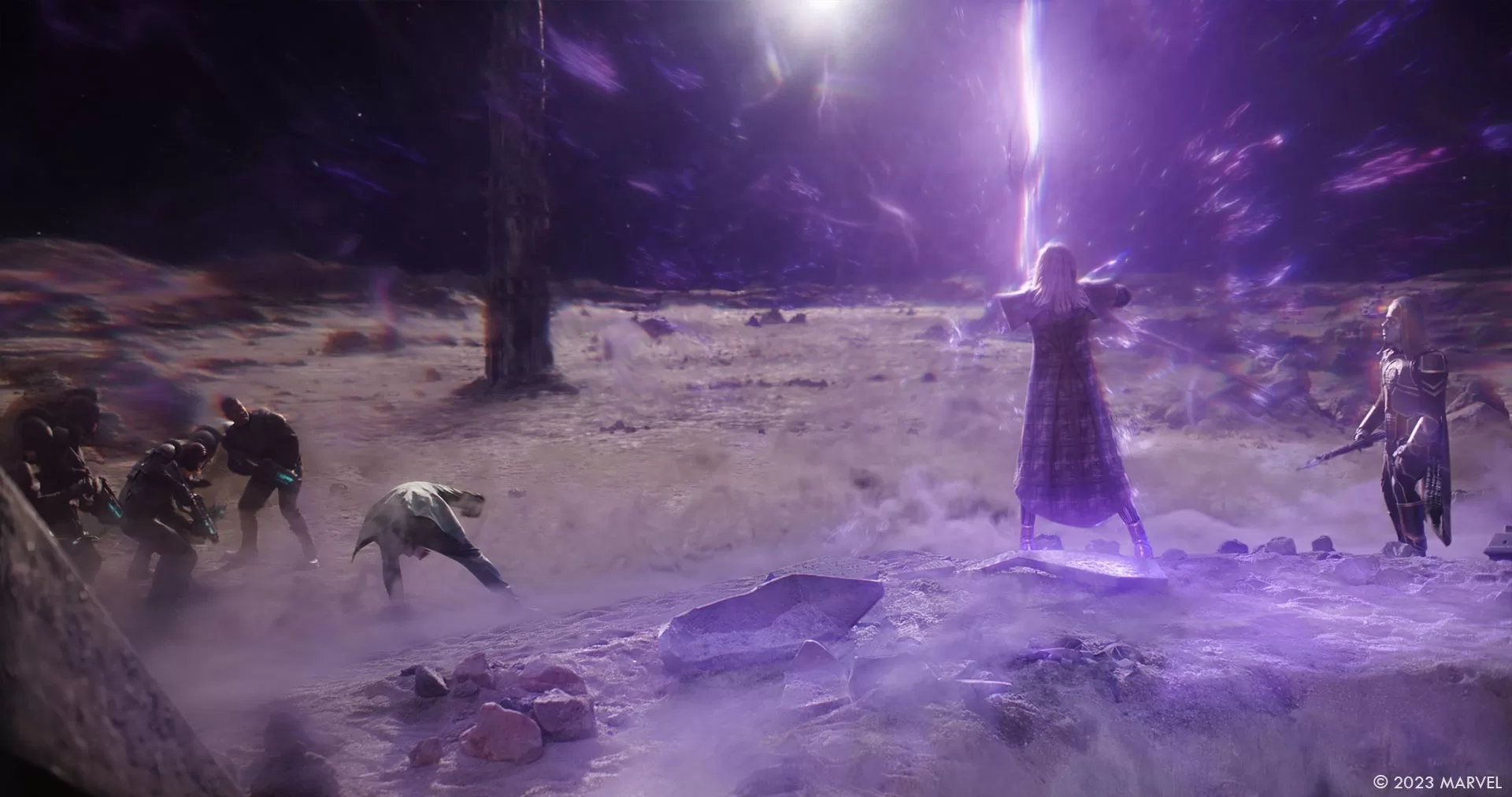
Can you elaborates about the sequence with the Flerkitten?
The Flerkitten evacuation sequence was a genuine joy to create. The first kitten to be hatched is CG in every shot. ILM also ended up re-creating Nick Fury’s hands and arms in each of those shots for correct fur interaction and weight for the kitten animation and the desk that it is swallowing.
We had nine on-set kittens for reference for each of the shots where we knew we would need to add CG kittens. At maximum, one or two of the in-camera kittens made it into each kitten crowd shot. The largest CG kitten shot had 104 CG kittens, comprised of 32 hero animated kittens and 72 crowd kittens.
Additionally, quite a bit of development went into the S.A.B.E.R. worker « consume » animation for the kittens. We tried to retain the volume of the original person and maintain believability that they could be swallowed by a kitten. We didn’t want to show the character shrinking, so the kitten’s tentacles and mouth sac would entirely envelop the S.A.B.E.R. worker before shrinking into a deformed and stretched kitten mouth.
The animation of the Flerkittens in the zero G sequence finale was based on found Air Force Bioastronautics footage of zero G and vomit comet tests.
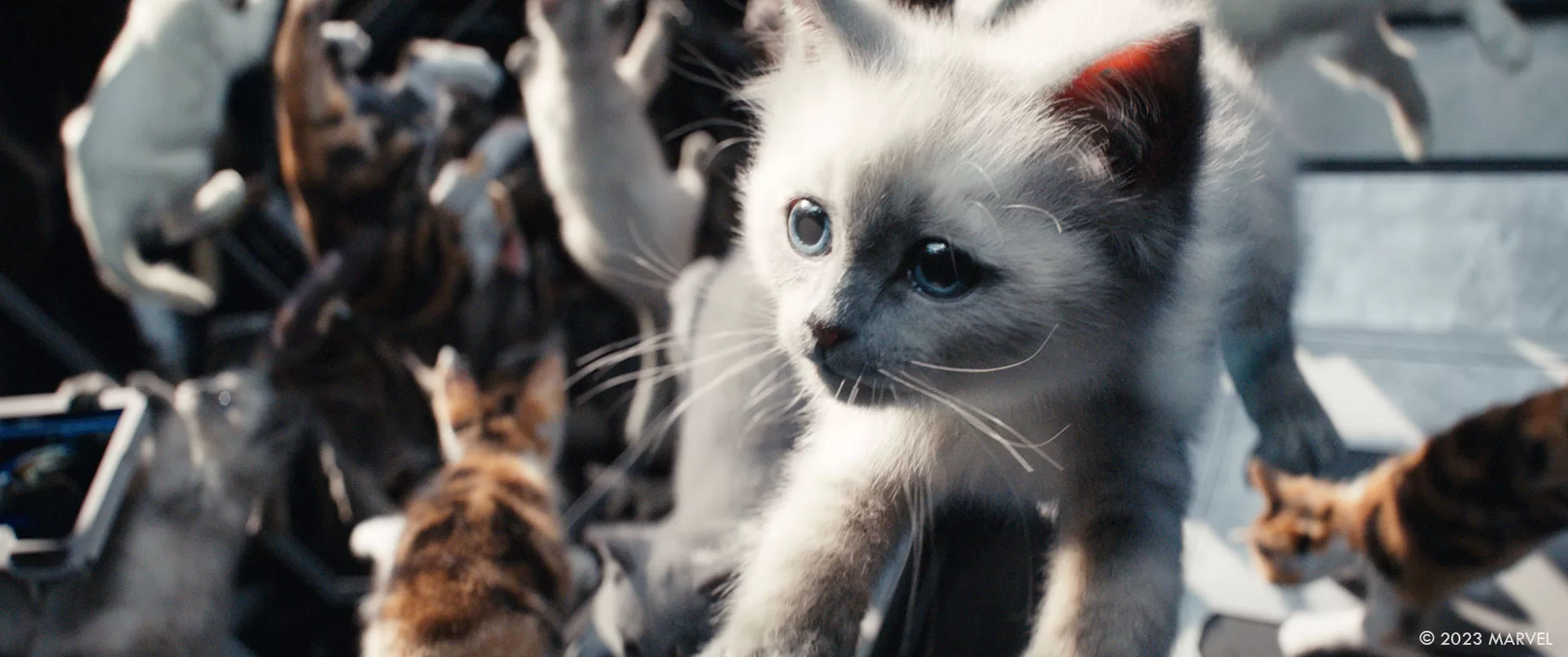
Many sequences are fully CG, what’s the main challenges with this kind of sequence?
For The Marvels, director Nia DaCosta wanted all of our full-CG sequences to start from a very grounded place. She wanted real-world camera moves, textures, lighting and physics. We worked towards this goal in CG asset creation as well as in animation. Our heroes can do incredible things. Their powers and actions take on special meaning when set against spaces that feel familiar to the audience.
We started all of our CG shot planning in previz with those ideas in mind. Our main previz vendor was The Third Floor and the magnificent team at Weta Fx executed their own previz for the nearly full-CG finale. The constant challenge was to ground the work, even in a crazy tear in space time, in realism for the characters.
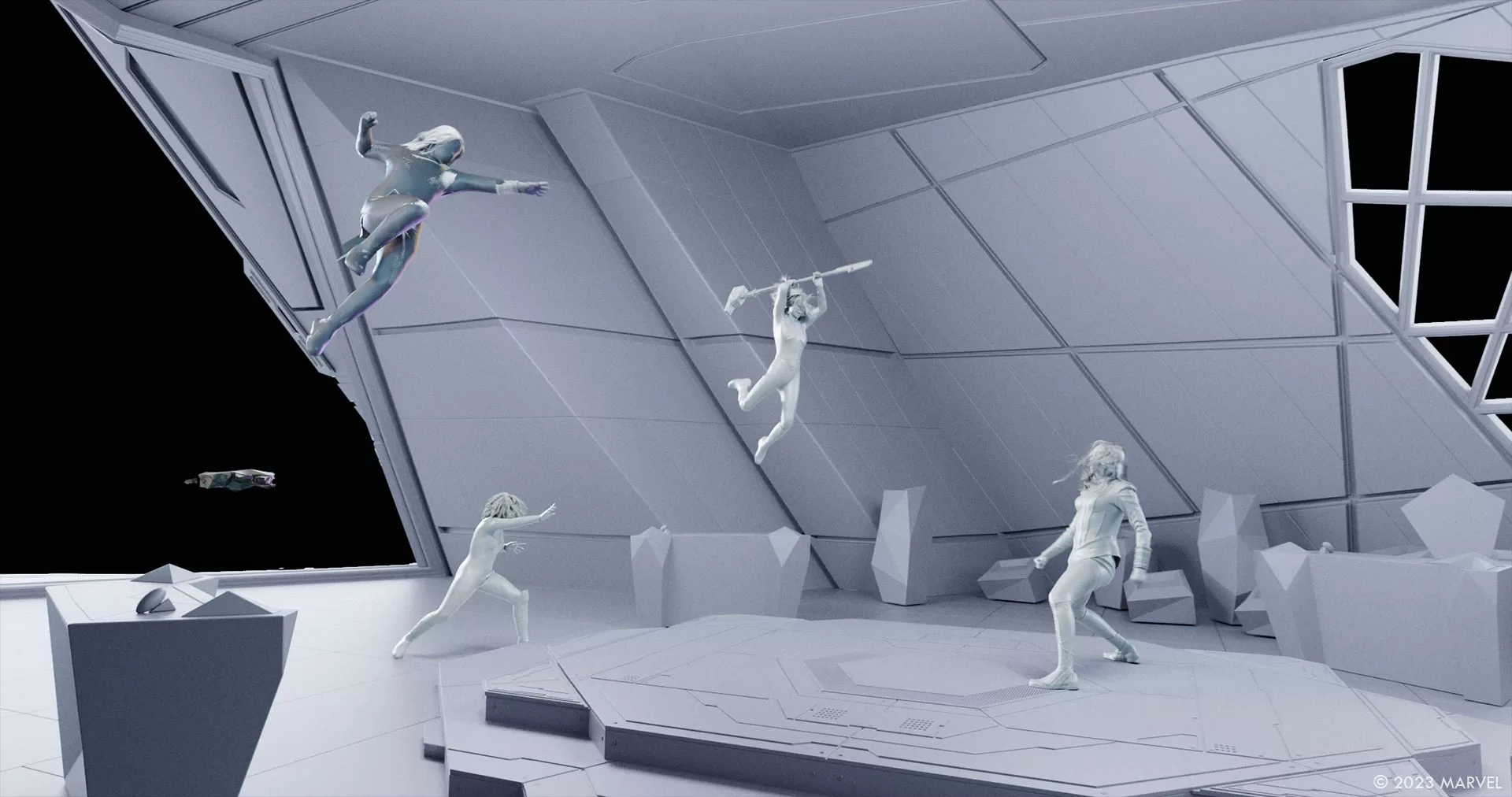
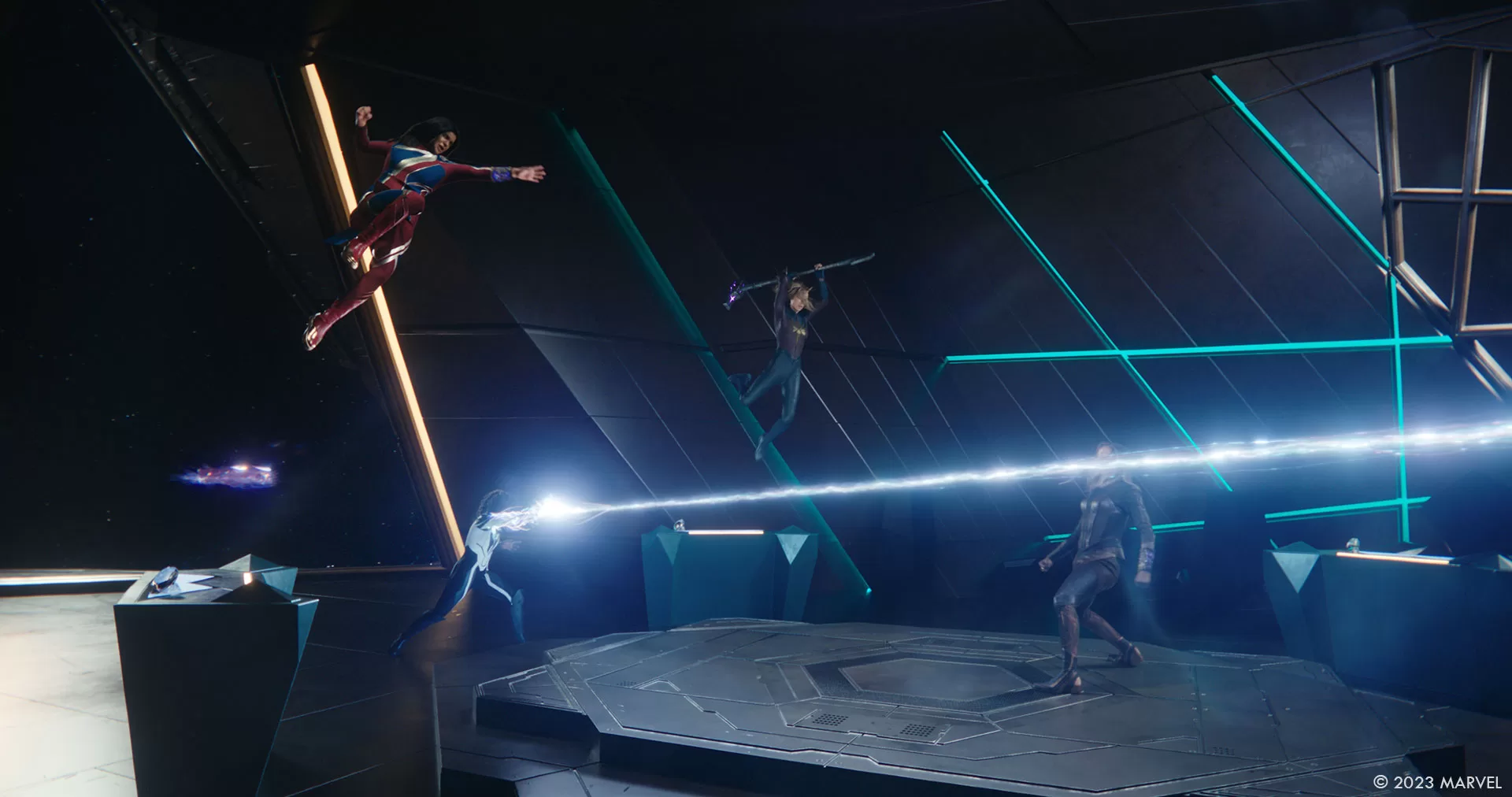
Which sequence or shot was the most challenging?
The sequence on Tarnax was particularly challenging for a few reasons. We wanted to show the villain stealing air, which isn’t a particularly visible resource. We also needed to show that the air was being siphoned to a city. We worked with Rising Sun Pictures on scale, design, and visibility for Hala through the broken jump point. The team at Sony Pictures Imageworks was incredible at helping us find a balance for seeing moving dust, smoke-like wind wisps, and particulate rock.
To prompt a full Skrull evacuation from Tarnax, we also needed to show massive scale destruction of the Stronghold city. Again, SPI helped us brainstorm ways that land destabilization could collapse concrete structures. We used liquefaction landslide reference to motivate the destruction of the general environment and erosion to form cracks in the land bridges.
All of this wildly complicated work was created in CG. We had plate performances for some of the Skrull action and for the close-to-camera flying heroes, but everything else in Tarnax was CG. The compositing team did an amazing job of balancing the elements so we could see the movement and directionality of the foreground FX while still being able to clearly see the action.
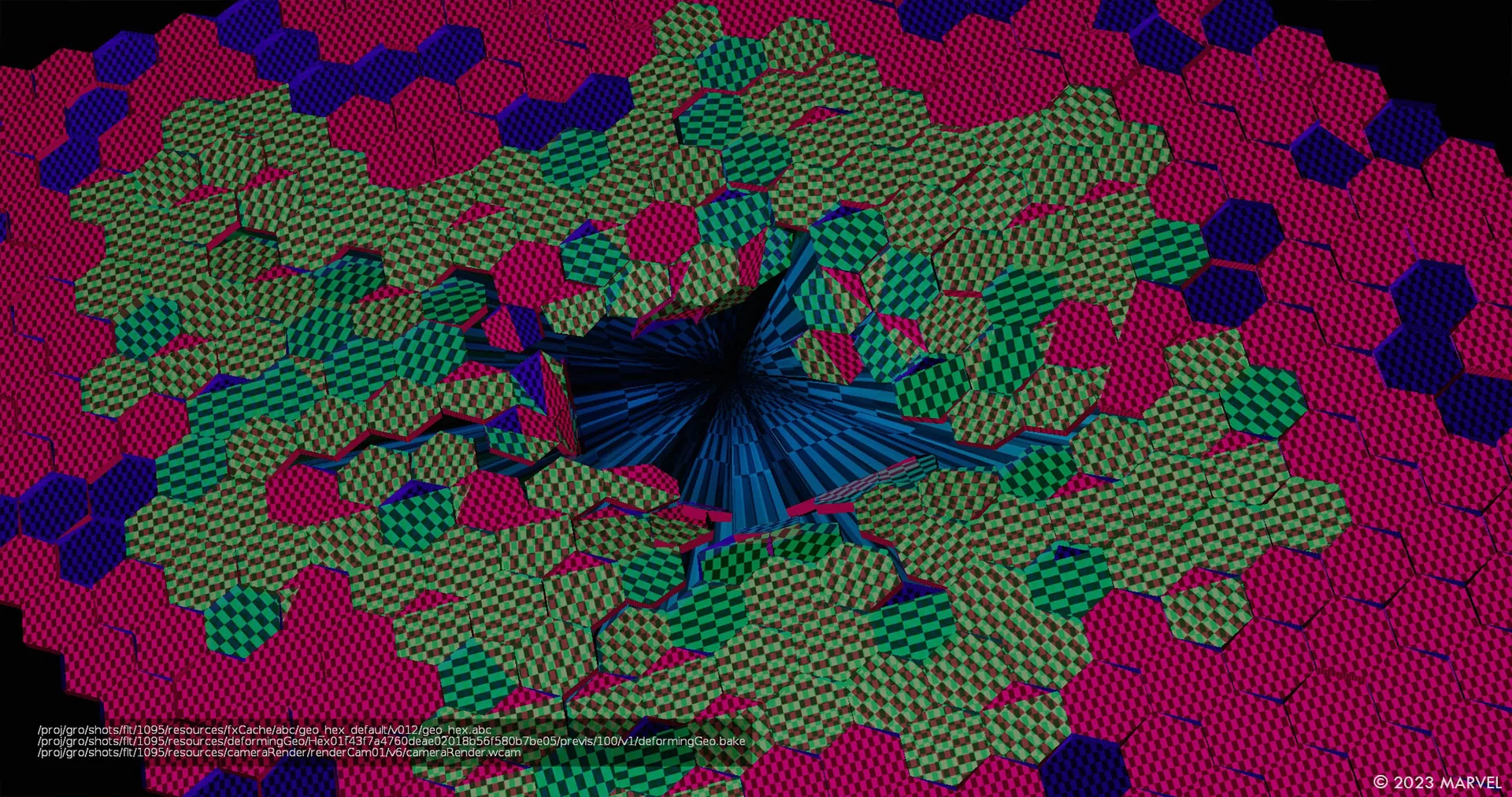
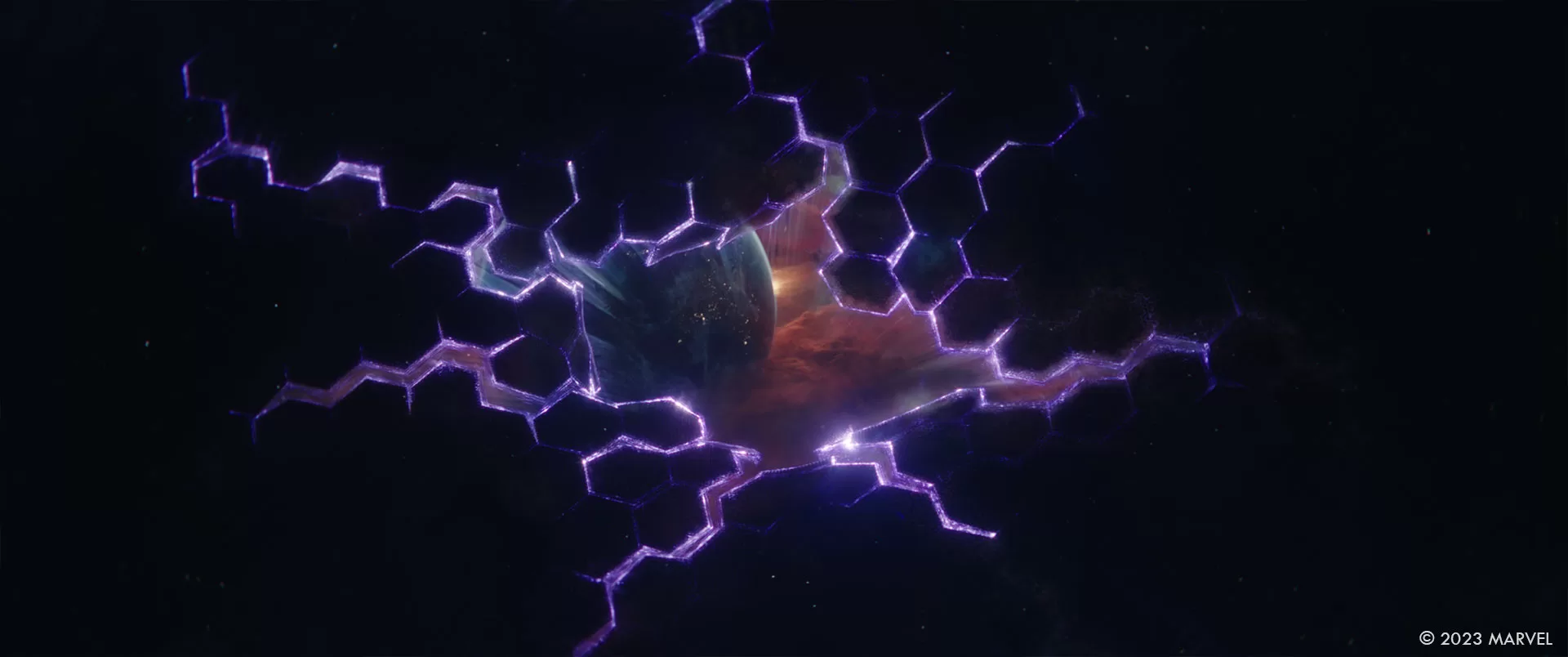
Is there something specific that gives you some really short nights?
Short nights come from re-thinking the decisions of the shoot day over and over. I want to provide the best possible references for our vendors so they have a good starting place for visual effects execution. Sometimes due to unforeseen challenges on-set, that isn’t always possible, but we try.
What is your favorite shot or sequence?
Tough choices! My favorite sequence is the Flerkitten evacuation from S.A.B.E.R.. It still brings me joy, no matter how many times I watch it. My favorite shot is Carol and Goose diving off of her ship towards MB-418. It’s just a beautiful shot.
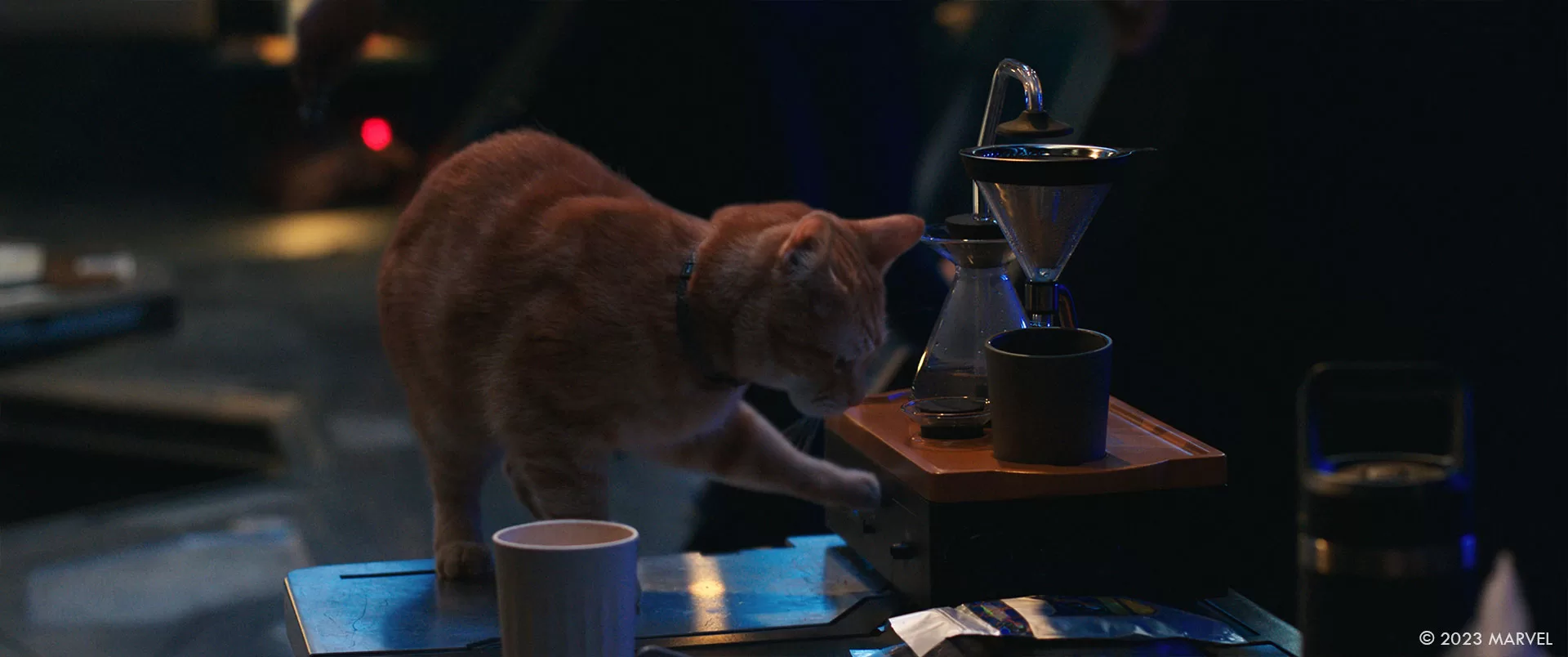
What is your best memory on this show?
We wanted all of the space travel in Carol’s ship to be in camera, so we created a massive 3800 LED panel pop-up volume in an oval around the set. One of the best memories from shoot was the day we were finally filming in Carol’s ship, with traveling stars and nebulas all around us.
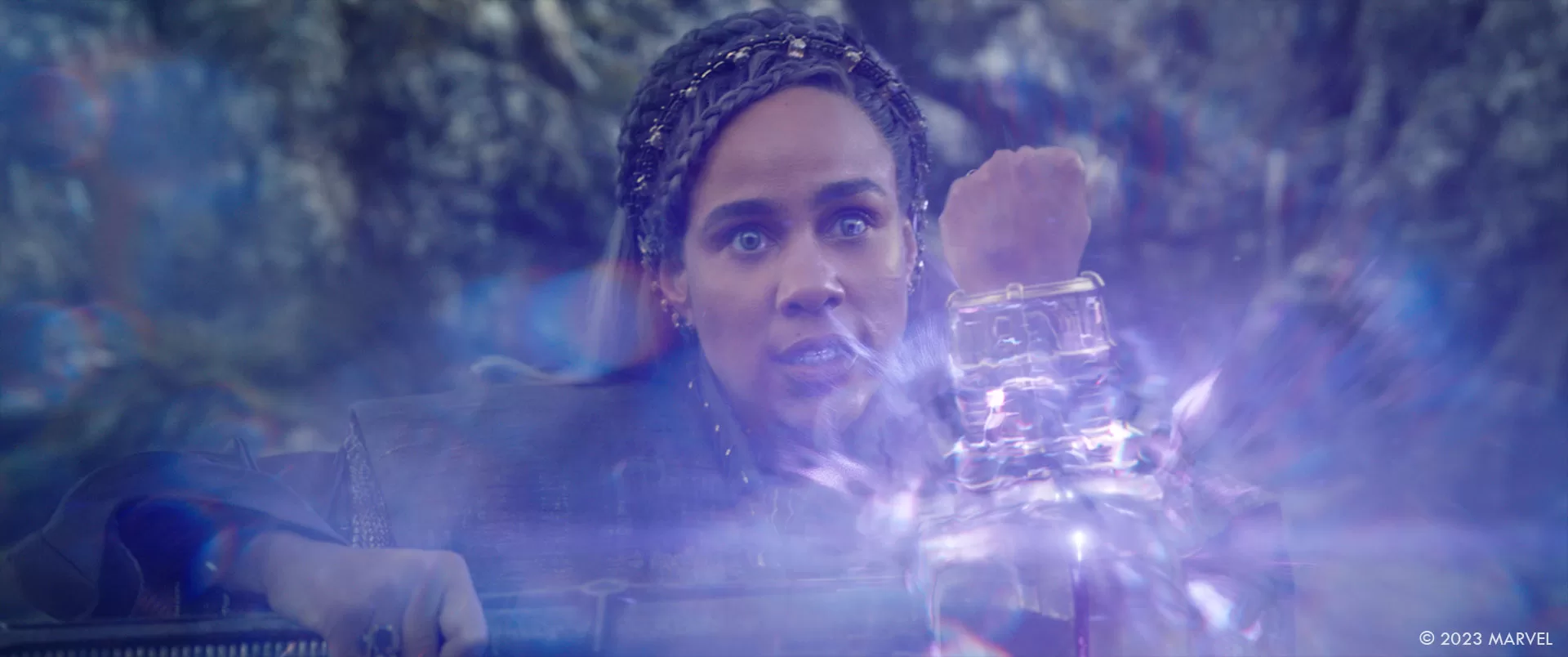
How long have you worked on this show?
From my start date to theatrical release was 3 years, 10 days.
A big thanks for your time.
WANT TO KNOW MORE?
ILM: Dedicated page about The Marvels on ILM website.
Sony Pictures Imageworks: Dedicated page about The Marvels on Sony Pictures Imageworks website.
Weta FX: Dedicated page about The Marvels on Weta FX website.
© Vincent Frei – The Art of VFX – 2023






